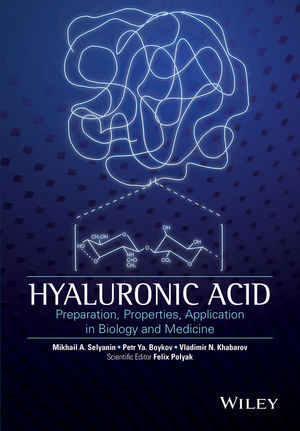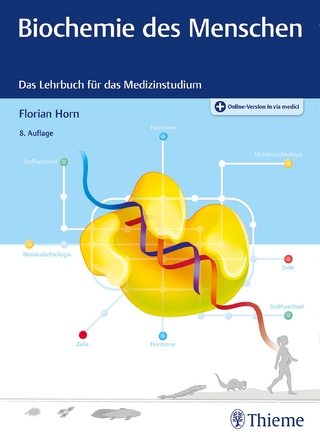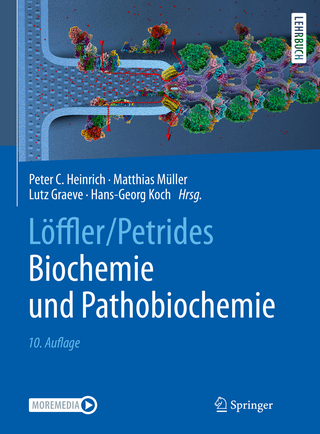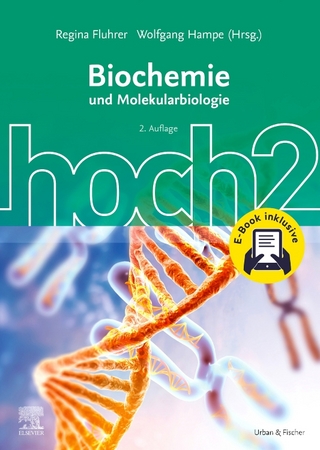
Hyaluronic Acid
John Wiley & Sons Inc (Verlag)
978-1-118-63379-3 (ISBN)
Hyaluronic Acid: Production, Properties, Application in Biology and Medicine consists of six chapters discussing the various issues of hyaluronic acid research. In Chapter 1, a historical analysis recounts the discovery and milestones of the research leading to the practical applications of hyaluronan. Chapter 2 is dedicated to biological role of the hyaluronic acid in nature, in particular in the human body. The chapter starts from the phylogenesis of hyaluronic acid, then describes hyaluronan functions in human ontogenesis and especially the role which hyaluronan plays in extracellular matrix of the different tissues. Chapter 3 describes the methods to manufacture and purify hyaluronic acid, including the analytical means for assessing quality of the finished product. Chapter 4 discusses the structure and rheological properties of hyaluronic acid considering effects on conformation and biological properties related to molecular weight. In Chapter 5, the physical and chemical methods for modifying the structure of hyaluronan are discussed including cross-linking using bi-functional reagents, solid-phase modification and effects of the combined action of high pressures and shift deformation. The final chapter focuses on the products derived from hyaluronic acid, including therapeutics composed of modified hyaluronan conjugated to vitamins, amino acids and oligo-peptides. The biological roles and medical applications of this polysaccharide have been extensively studied and this book provides a wealth of scientific data demonstrating the critical role of hyaluronic acid and its promise as a multifaceted bio-macromolecule.
Approaching hyaluronic acid from multiple angles, this book links relationships between its biological functions, structure and physical–chemical properties. It will be an invaluable resource to researchers, both industrial and academic, involved in all aspects of hyaluronan-based technologies.
Dr Vladimir N. Khabarov is Scientific Director at Group Martinex He has comprehensive academic knowlege and expeience in radiochemistry, chemistry of polymers, bioorganic chemistry. Experience in research and development of medicinal products. He has extensive publication experience with 90 scientific papers and 10 patents. Dr Petr Ya. Boikov worked at the I.M.Sechenov Moscow Medicinal Academy as Professor of cell biology, before moving to Group Martinex. He has a PhD in biologcy and works in organic, medicinal and biochemistry, molecular and cell biology, focusing on research of the mechanisms of the biologic and medicinal action of the new chemical products. Dr Mikhail A. Selyanin is a specialist in dermatology and aesthetic medicine and works as part of LLC GC Martinex a major supplier of aesthetic medicine products and equipment in Russia and Eastern Europe. Toskani Laboratory, a subsidiary of Martinex Group produces injection drugs fillers and chemical peels, with their research centre working on new applications of our patented solid-state modification technique of hyaluronic acid. He was vice-president of Institute of microcells at UNESCO, León, 2012 and President of National Society of Mesotherapy in 2008. Dr Felix Polyak is Chief Operating Office at Aluron Biopharma Inc in Montreal Canada. He received his PhD in Organic Chemistry at the Institute of Organic Synthesis, Riga, Latvia, in the early 1970s. He has academic and inductrial experience in organic, medicinal and peptide chemistry. Experience in all chemical aspects of drug development, such as R&D, scale-up and process development, GMP manufacturing and drug product formulation. He is a member of the Chemical Institute of Canada, the European Peptide Society and the American Peptide Society. He has published more than 40 scientific papers and 7 patents.
Foreword xi
Introduction xiii
1 The History of Hyaluronic Acid Discovery, Foundational Research and Initial Use 1
1.1 Discovery 1
1.2 Foundational Research 2
1.3 Initial Medical Applications 3
1.4 Sources of Hyaluronan 4
1.5 Current Medical Study and Use 6
1.6 Impact and Future Directions 7
References 7
2 The Biological Role of Hyaluronic Acid 9
2.1 Hyaluronic Acid Phylogenesis 9
2.1.1 Polysaccharide Structure and the Problems of Phylogenesis 13
2.1.2 Physico-Chemical and Functional Differences of Polysaccharides 18
2.1.3 Biochemical Features of Hyaluronic Acid and Other Glycosaminoglycans 20
2.2 Functions of Hyaluronan in Human Ontogenesis 22
2.2.1 Role of Hyaluronic Acid in Fertilization 22
2.2.2 Hyaluronan and Other Glucosaminoglycans in Cell Division, Migration and Differentiation 25
2.2.3 Hyaluronic Acid and Sulfated Glycosaminoglycans in Maintaining a Differentiated Status of Cells 33
2.2.4 Hyaluronan and Induction of Cellular Cycles for Differentiated Cells 35
2.2.5 The Source of Hyaluronic Acid’s Functional Properties and the Dynamics of its Synthesis and Degradation 44
2.2.6 The Rules of Biopolymer Functional Cleavage 52
2.3 Hyaluronan Signalling Systems 53
2.4 Hyaluronan Functions in the Extracellular Matrix 59
2.4.1 Extracellular Space 60
2.4.2 Composition and Functioning of the Extracellular Matrix 60
2.4.3 The Role of Hyaluronan in Transportation of Substances through the Extracellular Matrix: Diffusion, Osmosis, Electro-Osmosis and Vesicular Transportation 63
2.4.4 Hyaluronan in the Extracellular Matrix of Different Connective Tissues 65
References 67
3 Methods of Hyaluronic Acid Production 77
3.1 Hyaluronan Sources and Extraction 77
3.1.1 Hyaluronan Production from Animal Sources: General Methods 77
3.1.2 Hyaluronan Purification 78
3.1.3 The Chemical Production of Hyaluronan from Chicken Combs 81
3.1.4 HA Production for Ophthalmology 82
3.2 Bacterial Methods of Hyaluronic Acid Production 84
3.3 Hyaluronan Destruction during Production, Storage and Sterilization 85
3.4 Enzymatic Destruction of Hyaluronan 86
3.4.1 Hyaluronidase Classification 86
3.4.2 Properties and Functions of Hyaluronidases 87
3.5 Non-Enzymatic Destruction of Hyaluronan 88
3.5.1 Acid-Base Hydrolysis of Hyaluronan 88
3.5.2 Oxidation-Reduction Depolymerization of Hyaluronan 88
3.6 Quality of Hyaluronan Commercial Products of Animal and Bacterial Origin 89
References 92
4 Molecular and Supramolecular Structure of Hyaluronic Acid 97
4.1 Primary Structure of Hyaluronic Acid 97
4.2 Structure of Hyaluronan in Solution 101
4.3 Rheological Properties of Hyaluronic Acid 104
References 116
5 Chemical Modifications, Solid Phase, Radio-Chemical and Enzymatic Transformations of Hyaluronic Acid 121
5.1 Main Characteristics of Cross-Linked Hydrogels 122
5.2 Methods of Hyaluronic Acid Cross-Linking 124
5.2.1 Cross-Linking with Carbodiimides 124
5.2.2 Cross-Linking with Aldehydes 126
5.2.3 Cross-Linking with Divinylsulfone 126
5.2.4 Cross-Linking by the Ions of Polyvalent Metals 127
5.2.5 Cross-Linking with Epoxides 127
5.2.6 Photo-Cross-Linking 128
5.2.7 Solid-State Cross-Linking under High Pressure and Shear Deformation (Solid-State Reactive Blending: SSRB) 130
5.3 Radiochemical Transformations (Radiolysis) of Hyaluronan Aqueous Solutions 134
References 137
6 Medical Applications of Hyaluronan 143
6.1 Hyaluronan and Aesthetic Medicine 143
6.1.1 Intradermal Hyaluronan-Based Microimplants 143
6.1.2 Cross-Linking of Hyaluronan into a Three-Dimensional Network 144
6.1.3 Hyaluronic Acid in Injection Cosmetology (Biorevitalization) 150
6.1.4 Molecular Weight of Hyaluronan in Biorevitalization Products 151
6.1.5 Antioxidant Efficiency of Hyaluronan and other Biologically Active Compounds as Potential Products for Aesthetic Medicine 154
6.1.6 Bio-Repairants as a New Class of Injectable Products Based on Hyaluronic Acid Modified with Low Molecular Weight Bio-Regulators 161
6.2 Hyaluronan in Arthrology 170
6.3 Hyaluronan in Ophthalmology 176
6.4 Hyaluronan in Oncology 176
6.5 The Role of Hyaluronan in Healing Wounds 183
6.6 Hyaluronan in Immunology 186
References 186
Conclusion 193
Index 195
| Erscheint lt. Verlag | 16.3.2015 |
|---|---|
| Übersetzer | Felix Polyak |
| Verlagsort | New York |
| Sprache | englisch |
| Maße | 177 x 250 mm |
| Gewicht | 585 g |
| Themenwelt | Studium ► 1. Studienabschnitt (Vorklinik) ► Biochemie / Molekularbiologie |
| Naturwissenschaften ► Biologie ► Biochemie | |
| Naturwissenschaften ► Chemie ► Organische Chemie | |
| ISBN-10 | 1-118-63379-2 / 1118633792 |
| ISBN-13 | 978-1-118-63379-3 / 9781118633793 |
| Zustand | Neuware |
| Haben Sie eine Frage zum Produkt? |
aus dem Bereich


